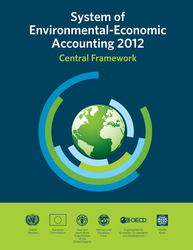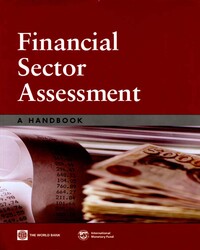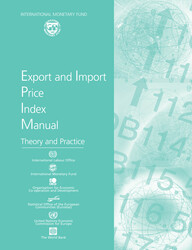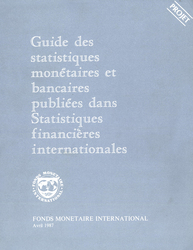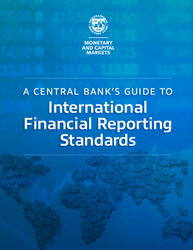
A Central Bank's Guide to International Financial Reporting Standards
The objective of this guide is to provide central banks with a model set of International Financial Reporting Standards-compliant financial statements.
READ MORE...
Publication date: April 2021
ISBN: 9781513563602
$0.00
Add to Cart by clicking price of the language and format you'd like to purchase
Available Languages and Formats
| English | |||
| Spanish | |||
| French |
Prices in red indicate formats that are not yet available but are forthcoming.
Topics covered in this book
This title contains information about the following subjects.
Click on a subject if you would like to see other titles with the same subjects.
Finance , Public Finance , Business and Economics - Statistics , International Financial Reporting Standards , central banks , financial statements
Summary
About one-quarter of the world’s central banks apply IFRS with approximately a quarter more looking to IFRS for further guidance where their local standards do not provide enough guidance. Given the varied mandates and types of policy operations undertaken by central banks, there also exists significant variation in practice, style, and the extent of the financial disclosures in both the primary statements and in the note disclosures. By their nature, central banks are unique in their jurisdiction and so do not always have local practices and examples they can follow. Although the major accounting firms have created model disclosures intended for commercial banks, these are often not totally appropriate for a central bank. The application of IFRS across central banks differs based on the mandate of the central bank and the capacity of the accounting profession in the specific jurisdiction. An analysis of international practices, such as those undertaken in preparing these model statements, may help address questions about the structure of the statements themselves as well as the organization of the note disclosures. As a consequence, each central bank following IFRS has largely developed its own disclosures with only limited reference to others. Input from the external auditors has been significant, but some of this has been determined by the approach used by the specific auditor’s style for commercial banks rather than central banks. Auditors do not always fully appreciate the differences between a commercial bank and a central bank, which has a different role and undertakes transactions to meet its policy objectives. This has often led to an over emphasis of items not material in the context of a central bank and insufficient disclosures on operations or accountabilities specific to the functions of the central bank.
Copyright © 2010 - 2024
Powered by:
AIDC
